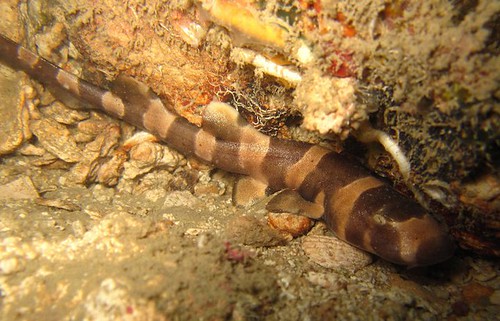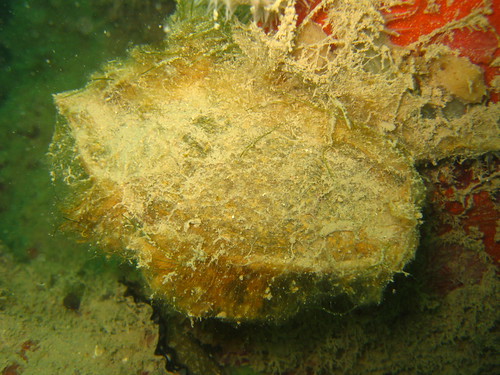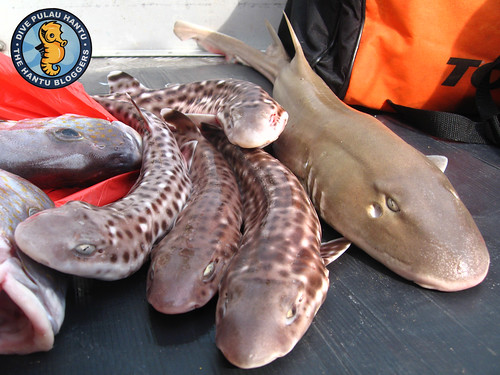Hantu's Bamboo Sharks
 July 29, 2013
July 29, 2013
It definitely pays to be kiasu sometimes! Hantu Blog diver, Wyatt Ang, took his GoPro down with him for our dive at Pulau Hantu yesterday, and left it on during the entire dive. If he hadn’t had done that, we might not have had this opportunity to relive this exciting moment of crossing paths with a free swimming bamboo shark!

Juvenile bamboo shark at Pulau Hantu. PHOTO: Cindy Tan
The bamboo shark Chiloscyllium punctatum is an extremely hardy species, with a slender body and a thick, elongate tail. While the adults are light brown and lack an obvious colour pattern, juveniles (above) are distinctly marked with bold dark transverse bands and a few scattered spots (2) (3). Like all sharks in its family (Hemiscylliidae), the paired pectoral and pelvic fins are muscular and leg-like, ideal for clambering over reefs and into crevices (2) (4). Adults can reach a maximum of 105cm, which looks about the size of the individual in the video!
Biology
Despite being relatively common, as a solitary, unobtrusive species, the bamboo shark is not frequently seen (2). Juveniles typically hide in reef crevices, where their broad banding pattern provides excellent camouflage (1) (3). Feeding mainly at night, the bamboo shark excavates the sediment in search of a diverse array of prey, from crabs and polychaete worms to shrimps and small fish. With the ability to survive a complete tidal cycle exposed out of the water, it commonly forages in the intertidal zone and in shallow tidal pools on coral or rocky reefs (1) (2) (3).
The bamboo shark reproduces oviparously, with the eggs deposited in small rounded cases on the sea floor (1) (2) (3). The developing embryos feed solely on the yolk within the case until they hatch (3).
Range and Habitat
The bamboo shark has an Indo-West Pacific distribution, from India east to Japan and south to the northern coast of Australia (1) (2) (3).
They are found on coral reefs and on sandy and muddy substrates from the intertidal zone down to depths of up to 85 metres. Owing to its ability to tolerate extremely hypoxic conditions, this species is often found on coral reef flats and in tidal pools (1) (2) (3).
Threats and Protection
The Bamboo shark is classified as Near Threatened (NT) on the IUCN Red List (1).
Both commercial and traditional fisheries target the brownbanded bamboo shark for human consumption over large parts of its range (1) (2) (3). This is compounded by the widespread degradation of coral reef habitat resulting from destructive fishing practices and pollution (1) (3). While collection for the aquarium trade is an additional concern, owing to the hardiness of the species and its tendency to breed prolifically in captivity, the impact is thought to be relatively minor (1) (2) (3).
The brownbanded bamboo shark is currently only protected on the east coast of Australia where it occurs in several marine parks (1).


 Posted in
Posted in 



 content rss
content rss
COMMENTS